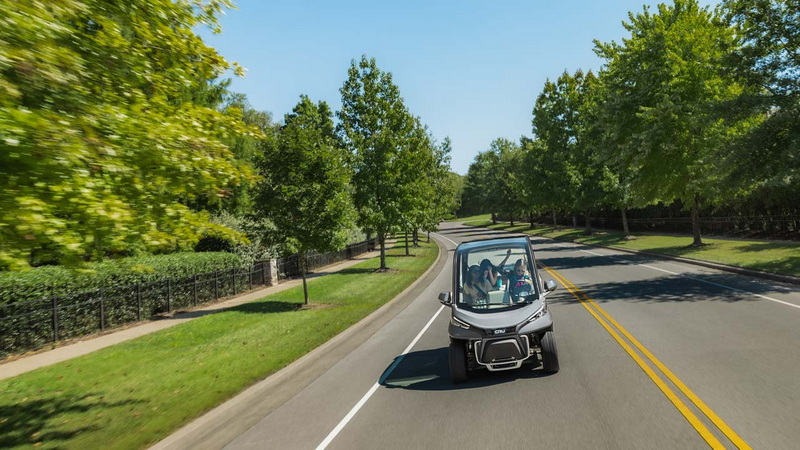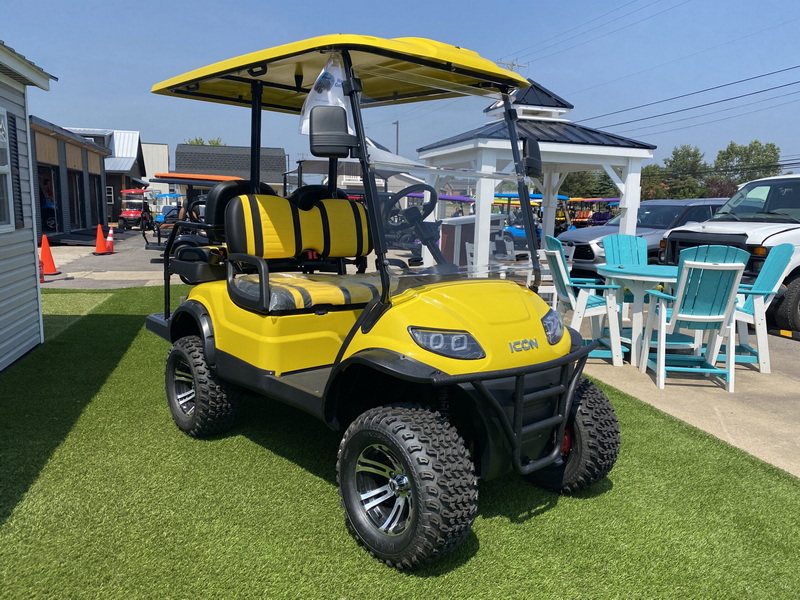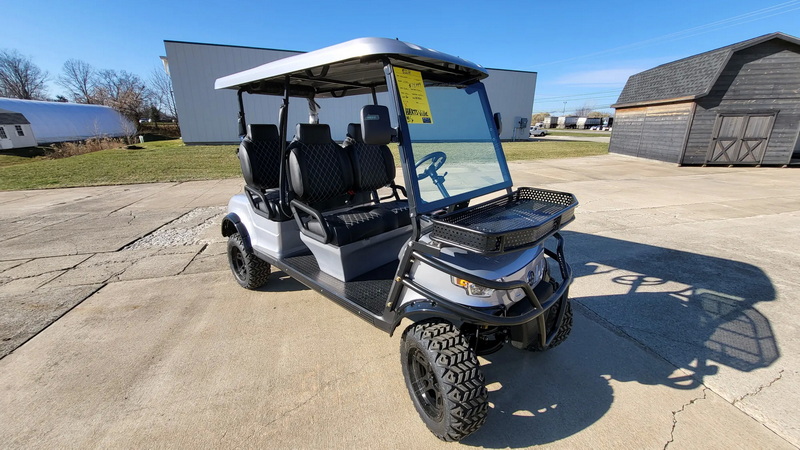Content Menu
● Understanding Electric Golf Cart Range
>> Battery Types and Their Impact on Range
>>> Lead-Acid Batteries
>>> Lithium-Ion Batteries
>> Terrain and Its Effect on Range
>> Driving Habits and Their Influence
>> Weight and Load Considerations
● Maximizing Your Electric Golf Cart's Range
● Real-World Examples of Electric Golf Cart Range
>> Example 1: Lead-Acid Battery Cart on a Golf Course
>> Example 2: Lithium-Ion Battery Cart in a Residential Community
● Advancements in Electric Golf Cart Technology
● Environmental Benefits of Electric Golf Carts
● The Future of Electric Golf Carts
● Conclusion
● FAQ
>> 1. How long does it take to charge an electric golf cart?
>> 2. Can I upgrade my lead-acid battery golf cart to lithium-ion?
>> 3. How often should I charge my electric golf cart?
>> 4. Do electric golf carts work well in cold weather?
>> 5. How fast can an electric golf cart go?
Electric golf carts have become increasingly popular not only on golf courses but also in various recreational and residential settings. One of the most common questions potential users ask is, "How long can you drive an electric golf cart?" This comprehensive guide will explore the factors that influence the range of electric golf carts, discuss different battery types, and provide tips on maximizing your cart's performance.

Understanding Electric Golf Cart Range
The range of an electric golf cart refers to the distance it can travel on a single charge. This distance can vary significantly depending on several factors, including battery type, terrain, driving habits, and cart maintenance.
Battery Types and Their Impact on Range
There are two primary types of batteries used in electric golf carts: lead-acid and lithium-ion. Each has its own characteristics that affect the cart's range.
Lead-Acid Batteries
Lead-acid batteries are the traditional choice for golf carts. They are less expensive but offer a shorter range compared to lithium-ion batteries.
- Range: Typically 25 to 40 miles on a single charge
- Lifespan: 4 to 6 years with proper maintenance
- Charging time: 8 to 10 hours
Lithium-Ion Batteries
Lithium-ion batteries are becoming increasingly popular due to their superior performance and longer lifespan.
- Range: 50 to 100 miles on a single charge
- Lifespan: Up to 10 years or 3000 to 5000 cycles
- Charging time: Less than 4 hours
Terrain and Its Effect on Range
The type of terrain you're driving on can significantly impact your golf cart's range:
- Flat terrain: Allows for maximum range potential
- Hilly terrain: Requires more power, reducing overall range
- Rough or sandy surfaces: Increase power consumption, decreasing range
Driving Habits and Their Influence
Your driving style plays a crucial role in determining how far your electric golf cart can go:
- Speed: Higher speeds consume more power, reducing range
- Acceleration: Smooth, gradual acceleration conserves energy
- Braking: Gentle braking and coasting when possible improve efficiency
Weight and Load Considerations
The weight of the cart and its passengers or cargo affects the range:
- Heavier loads: Require more energy to move, reducing range
- Lighter loads: Allow for increased range and efficiency

Maximizing Your Electric Golf Cart's Range
To get the most out of your electric golf cart, consider these tips:
1. Proper battery maintenance: Regular cleaning and watering (for lead-acid batteries)
2. Optimal tire pressure: Ensure tires are properly inflated
3. Smooth driving: Avoid sudden accelerations and hard braking
4. Plan your route: Choose flatter paths when possible
5. Reduce weight: Remove unnecessary items from the cart
Real-World Examples of Electric Golf Cart Range
To give you a better idea of what to expect, here are some real-world examples of electric golf cart ranges:
Example 1: Lead-Acid Battery Cart on a Golf Course
A typical 36-hole golf course round:
- Distance covered: 8 to 10 miles
- Terrain: Mixed (fairways, rough, some hills)
- Result: Most lead-acid battery carts can complete 36 holes on a single charge
Example 2: Lithium-Ion Battery Cart in a Residential Community
A day of running errands in a golf cart-friendly community:
- Distance covered: 20 to 30 miles
- Terrain: Mostly flat with some inclines
- Result: Lithium-ion battery carts can easily handle a full day of use with charge to spare

Advancements in Electric Golf Cart Technology
Recent technological advancements have significantly improved the performance and range of electric golf carts:
- Regenerative braking: Captures energy during braking to recharge the battery
- Solar panel integration: Some carts now feature solar panels to extend range
- Smart power management systems: Optimize power usage for increased efficiency
Environmental Benefits of Electric Golf Carts
Choosing an electric golf cart over a gas-powered one offers several environmental advantages:
- Zero emissions: Electric carts produce no direct emissions during operation
- Reduced noise pollution: Electric motors are significantly quieter than gas engines
- Energy efficiency: Electric carts convert a higher percentage of energy into motion
The Future of Electric Golf Carts
As technology continues to advance, we can expect to see further improvements in electric golf cart performance:
- Increased range: New battery technologies may extend range even further
- Faster charging: Rapid charging technologies could reduce downtime
- Autonomous features: Self-driving capabilities may be integrated into future models
Conclusion
Electric golf carts have come a long way in terms of range and performance. With proper maintenance and driving habits, you can expect to drive your electric golf cart for 25 to 100 miles on a single charge, depending on the battery type and other factors. As technology continues to improve, we can look forward to even more efficient and capable electric golf carts in the future.

FAQ
1. How long does it take to charge an electric golf cart?
Charging times vary depending on the battery type. Lead-acid batteries typically take 8 to 10 hours for a full charge, while lithium-ion batteries can be fully charged in less than 4 hours.
2. Can I upgrade my lead-acid battery golf cart to lithium-ion?
Yes, many golf carts can be upgraded from lead-acid to lithium-ion batteries. However, this process may require professional installation and possibly some modifications to the cart's electrical system.
3. How often should I charge my electric golf cart?
It's best to charge your electric golf cart after each use, regardless of how much charge is left. This practice helps maintain battery health and ensures your cart is always ready for use.
4. Do electric golf carts work well in cold weather?
Electric golf carts can operate in cold weather, but their range may be reduced. Lithium-ion batteries generally perform better in cold conditions compared to lead-acid batteries.
5. How fast can an electric golf cart go?
Most electric golf carts have a top speed of 12 to 14 mph (19 to 22 km/h). Some models designed for street use can reach speeds of up to 25 mph (40 km/h).











































